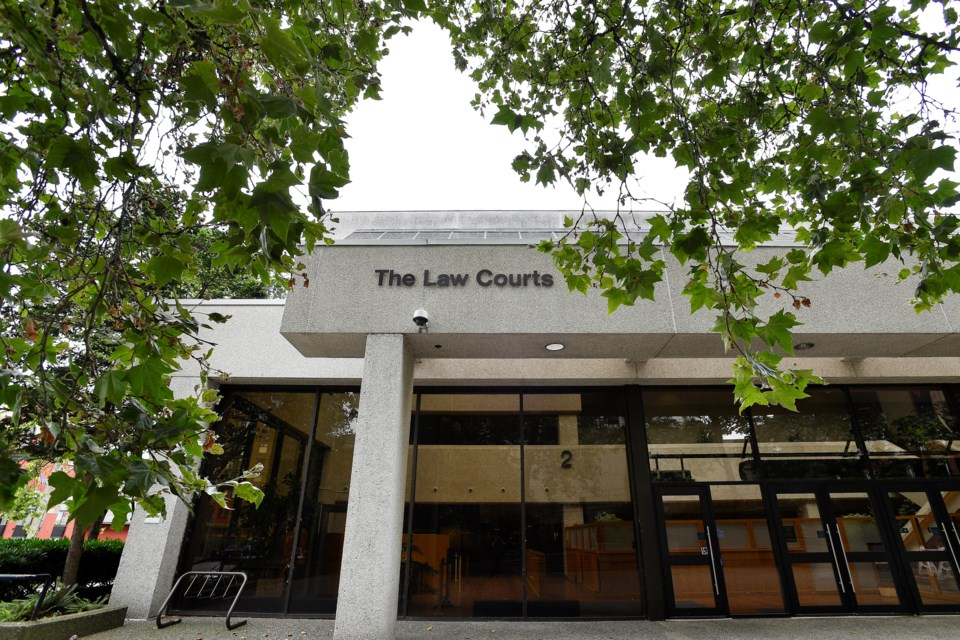New Westminster is urging the province to address the “deplorable” state of the province’s original Indigenous court facility.
Coun. Chuck Puchmayr, who chairs the city’s restorative justice committee, said the court is a “powerful and positive piece of reconciliation and restorative justice for Indigenous People’s” but it’s not getting the respect it deserves. He said the “tiny courtroom” in New Westminster is crammed when court is in session.
“There’s no room,” he said. “During the consultation or the rehabilitation, the lights keep going on and off if someone is standing with their back on the light switch. I thought, this is really such a powerful tool for Indigenous justice, who are so overly represented in our criminal justice system, and then to really give them this terrible – like a cloak room – to do the trials, I thought it was really unfair.”
Puchmayr said the Indigenous court is a piece of the criminal justice system that could divert thousands of men and women out of the prison system.
“The thing with the Indigenous courts is it’s everybody participation that is important. When the court starts in the morning, everybody stands up and identifies themselves, even the people in the gallery – ‘I am so and so, or I am with so and so.’ The whole idea is a team working to help that person.”
In response to a resolution from the city’s restorative justice committee, New Westminster city council wrote to Attorney General David Eby in May about the “unacceptable state” of the Indigenous court facility in New Westminster. The letter asked the province to take into consideration, with the lens of reconciliation, the requirements of the elders who are in court all day and who also require a gathering place outside of the court room.
In a letter to council, Eby said the New Westminster law courts house both the supreme and provincial courts. He said the courthouse has limited space for further expansion by either court.
“Ministry staff have been regularly attending the New Westminster Indigenous Court planning meetings and have heard about the needs and requirements of court participants,” he wrote. “Alternative flexible space was discussed at these meetings and is being considered.”
Eby said the ministry is open to moving the Indigenous court offsite, but participants have indicated they would prefer to stay at or close to the courthouse.
“Rest assured that the ministry is aware of the needs and requirements of the New Westminster Indigenous court,” he wrote. “Through ongoing engagement and consultation, I am confident that ministry staff will be able to explore and address feasible solutions for all those involved.”
The Provincial Court of B.C. has Indigenous courts in New West, North Vancouver, Kamloops, Duncan, Nicola Valley and Prince George. When it opened in November 2006, the New Westminster First Nations Court was the first of its kind in British Columbia.
“These courts do not conduct trials. They are sentencing courts that provide support and healing to assist in rehabilitation and to reduce recidivism while also acknowledging and repairing the harm done to victims and the community,” said the Provincial Court of British Columbia website. “Their focus is collaborative and holistic, recognizing the unique circumstances of Indigenous offenders within the framework of existing laws.”
Indigenous courts differ than traditional courtrooms in many ways.
Proceedings begin with a smudge and include introductions by all those in attendance, including the offender (who has pled guilty), the judge, lawyers, victims, First Nations elders, and support people, including outreach workers and probation officers. The goal is to have everyone sitting in a circle or around a table while the court hears its case and attendees create a healing plan is created for the offender.
A healing plan can include probation, sweat lodges, addiction treatment and community connections. The idea is that rehabilitating a person within the community – with community support – will benefit the person and the community in the long run.
Puchmayr, who has attended the court, spoke to one offender whose mother couldn’t be in the room to witness the acknowledgment of him completing his healing plan – or any of his previous court appearances – because there wasn’t enough space for her.
“It’s just a really powerful, powerful thing,” he said of the process. “It is standing-room only in there. … It’s really a busy spot. I don’t think it seats 30 people.”



